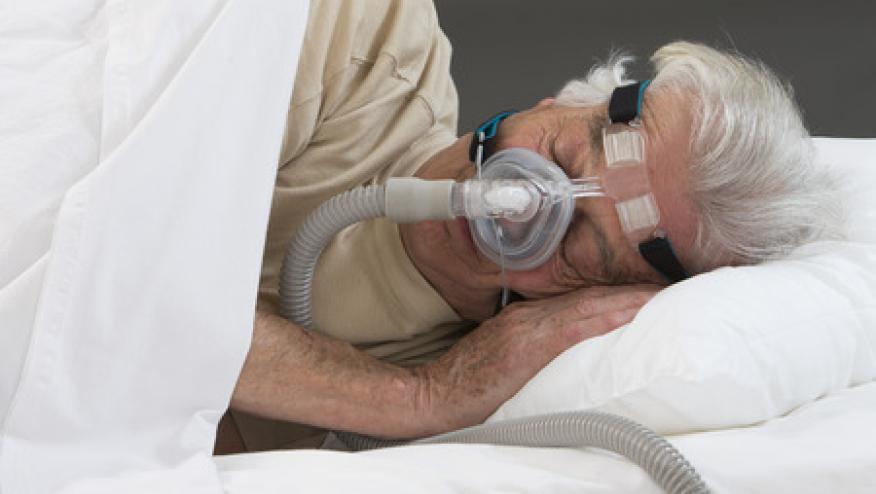Sleep Apnea Raises Gout Risk Save

Patients with obstructive sleep apnea were at increased risk for incident gout, particularly in the first years after the sleep apnea diagnosis, U.K. researchers reported.
In a large retrospective cohort study, the adjusted hazard ratio for a new gout diagnosis among individuals with sleep apnea was 1.42 (95% CI 1.29-1.56), according to Milica Blagojevic-Bucknall, PhD, of Keele University in Keele, England, and colleagues.
And the risk was highest from 1 to 2 years after the index date (time of sleep apnea diagnosis), when the hazard ratio was 1.64 (95% CI 1.30-2.06), the researchers reported in Arthritis & Rheumatology.
Individuals with sleep apnea and gout share multiple comorbidities such as hypertension and diabetes and risk factors such as obesity and alcohol use. In addition, the elevated serum uric acid levels that cause gout commonly are also detected in patients with sleep apnea.
Despite these associations, few studies have examined the possibility of a relationship between sleep apnea and gout over the long term, although one cohort study found a 50% increased risk for incident gout during the first year after sleep apnea diagnosis.
To address this gap, the researchers analyzed data from the Clinical Practice Research Datalink, which contains primary care information on approximately 5.5 million patients in the U.K.
The study included 15,879 individuals diagnosed with obstructive sleep apnea from 1990 to 2010, along with 63,296 matched controls. Three-quarters were men, and mean age was 52.2 years. Risks were examined at years 1, 2, 5, and 10 after the index date.
Compared with controls, those with obstructive sleep apnea more often were obese (51% versus 14%), and had comorbidities including diabetes (14% versus 6%), ischemic heart disease (5% versus 3%), hypertension (29% versus 16%), hyperlipidemia (14% versus 8%, P<0.001 for all). They also more often were current alcohol users (62% versus 50%) and were taking diuretics (28% versus 12%).
During a median follow-up time of 5.8 years, 4.9% of the sleep apnea patients and 2.6% of controls were diagnosed with gout. The incidence rate was 7.83 per 1,000 person-years in the sleep apnea group and 4.03 per 1,000 in the control group.
The researchers also considered the potential influence of body mass index (BMI) on gout risk, finding an increased risk among sleep apnea patients for all BMI groups. The normal BMI group had the highest adjusted risk (HR 1.76, 95% CI 1.22-2.53) compared with the overweight (HR 1.27, 95% CI 1.06-1.54) and obese (HR 1.40, 95% CI 1.21-1.61) groups.
In the normal BMI group, the risk of developing gout was most pronounced 2 to 5 years after the sleep apnea diagnosis, being twice that of individuals without sleep apnea (HR 2.02, 95% CI 1.13-3.62). For those who were overweight, the highest risk was during years 1 to 2 after the sleep apnea diagnosis (HR 1.73, 95% CI 1.02-2.96). For the obese, gout risks were elevated at all time points, being the highest at years 1 to 2 (HR 1.70, 95% CI 1.18-2.43).
The most likely explanation for the association between sleep apnea and gout is that "along with catecholamine surges and sustained hypertension, intermittent hypoxia increases nucleotide turnover which enhances endogenous uric acid production, raising the question as to whether correction of hypoxia in obstructive sleep apnea by treatment with continuous positive airways pressure lowers serum uric acid levels," the authors wrote.
That question will require randomized clinical trials, they noted.
They also pointed out that the risk of gout was strongest among patients whose BMI was within the normal range suggests that the influence of sleep apnea on uric acid levels and gout is independent of BMI.
"People with sleep apnea are at an increased risk of gout in both the short and long term," said co-author Edward Roddy, DM, also of Keele University. "Since this risk was highest in people with normal BMI, doctors and other health professionals should consider the possibility of gout in patients with sleep apnea regardless of BMI," he said in a press release.
Limitations of the analysis included the possibility that sleep apnea was under-recognized and that the effects of unmeasured confounders such as genetic and dietary factors may have been overlooked.
The study was funded by the National Institute for Health.









If you are a health practitioner, you may Login/Register to comment.
Due to the nature of these comment forums, only health practitioners are allowed to comment at this time.